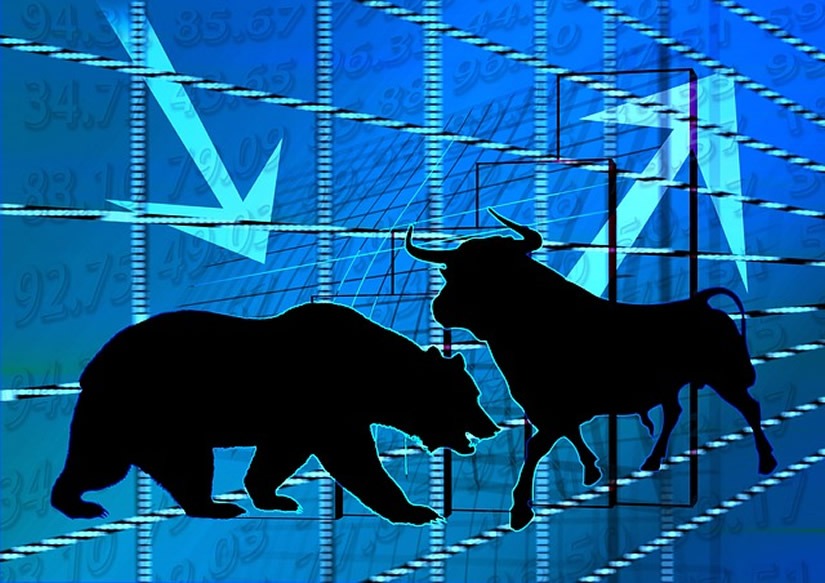Investors acknowledge a market bubble but optimism prevents them from seeking financial safety
By Elliott Wave International
The months before the 2000 and 2007 stock market peaks saw a measurable rise in news stories that used the phrase “financial bubble.”
But instead of selling, many investors kept right on buying.
The logic went something like this: “This bubble could burst one day — but not just yet.”
The March 2008 Elliott Wave Financial Forecast, a monthly publication which provides analysis and forecasts for major U.S. financial markets, showed this chart and said:

The bars on the chart show that the number of financial bubble articles boomed as the bear market began in 2000. When the mania re-ignited, the bubble talk receded briefly, only to re-emerge last year [2007] as the housing crash started to bite and the credit market imploded. The … bubble of 2003-2007 should be over, because bubble references are once again rising fast.
Free Reports:
 Sign Up for Our Stock Market Newsletter – Get updated on News, Charts & Rankings of Public Companies when you join our Stocks Newsletter
Sign Up for Our Stock Market Newsletter – Get updated on News, Charts & Rankings of Public Companies when you join our Stocks Newsletter
 Get our Weekly Commitment of Traders Reports - See where the biggest traders (Hedge Funds and Commercial Hedgers) are positioned in the futures markets on a weekly basis.
Get our Weekly Commitment of Traders Reports - See where the biggest traders (Hedge Funds and Commercial Hedgers) are positioned in the futures markets on a weekly basis.
Indeed, the worst of the 2008-2009 stock market debacle was just ahead.
Fast forward to 2020 and this Sept. 7 news item from CNBC:
‘We’re certainly in a bubble,’ strategist warns — but don’t expect it to pop anytime soon
Is it rational to stay in the market, even after acknowledging something as potentially financially dangerous as a bubble?
Here’s a classic quote from an Elliott Wave Theorist, a monthly publication which offers insights into financial and social trends, and is written by Robert Prechter, the president of Elliott Wave International:
The case for rational bubbles rests on the idea that investors are consciously making risk assessments and deciding that the gamble of buying high — to sell even higher — is worth it. But a bubble is fueled by more buying, which is propelled by new buyers and by increased conviction among those already invested, so few bubble investors actually do sell higher. Instead of buying high and selling higher, most of them do only the first half.
You deserve an independent perspective on financial markets, and Elliott wave analysis can bring you just that.
If you’re unfamiliar with Elliott wave analysis, read this quote from the book, Elliott Wave Principle: Key to Market Behavior, by Frost & Prechter:
In the 1930s, Ralph Nelson Elliott discovered that stock market prices trend and reverse in recognizable patterns. The patterns he discerned are repetitive in form but not necessarily in time or amplitude. Elliott isolated five such patterns, or “waves,” that recur in market price data. He named, defined and illustrated these patterns and their variations. He then described how they link together to form larger versions of themselves, how they in turn link to form the same patterns of the next larger size, and so on, producing a structured progression. He called this phenomenon The Wave Principle.
Discover more about the Wave Principle by reading the entirety of the online version of this Wall Street classic for free.
Free access to the book is available when you become a member of Club EWI, the world’s largest Elliott wave educational community. Just so you know: There are no obligations whatsoever when you join Club EWI and membership is also free.
Club EWI has around 350,000 members. All members have continual access to a wealth of Elliott wave educational materials on financial markets, trading and investing.
And, now, Club EWI members also have free access to Elliott Wave Principle: Key to Market Behavior — follow the link to have the online version of the book on your computer screen in just moments.
This article was syndicated by Elliott Wave International and was originally published under the headline A Look at the Perilous Psychology of Financial Bubbles. EWI is the world’s largest market forecasting firm. Its staff of full-time analysts led by Chartered Market Technician Robert Prechter provides 24-hour-a-day market analysis to institutional and private investors around the world.

- As expected, the RBNZ cut the rate by 0.5%. Australia’s inflation rate remained at its lowest level since the summer of 2021 Nov 27, 2024
- EUR/USD Steady Ahead of Major US Data Releases Nov 27, 2024
- NZD/USD Hits Yearly Low Amid US Dollar Strength Nov 26, 2024
- Trump plans to raise tariffs by 10% on goods from China and 25% on goods from Mexico and Canada Nov 26, 2024
- Fast fashion may seem cheap, but it’s taking a costly toll on the planet − and on millions of young customers Nov 25, 2024
- “Trump trades” and geopolitics are the key factors driving market activity Nov 25, 2024
- EUR/USD Amid Slowing European Economy Nov 25, 2024
- COT Metals Charts: Weekly Speculator Changes led by Platinum Nov 23, 2024
- COT Bonds Charts: Speculator Bets led lower by 5-Year & 10-Year Bonds Nov 23, 2024
- COT Soft Commodities Charts: Speculator Bets led lower by Soybean Oil, Soybean Meal & Cotton Nov 23, 2024
